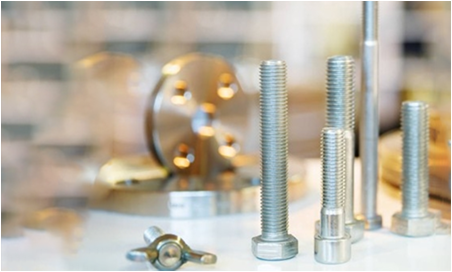des. . 04, 2024 17:19 Back to list
m6 threaded bar
Understanding M6 Threaded Bars Applications, Specifications, and Benefits
M6 threaded bars are a crucial component in various engineering, construction, and manufacturing applications. Their significance stems from their versatility and the strength they provide in connecting different materials. This article will delve into the specifications of M6 threaded bars, their applications, and the advantages they offer.
What is an M6 Threaded Bar?
An M6 threaded bar is a type of fastener that is characterized by a metric thread with a nominal diameter of 6 millimeters. The 'M' designates the metric system, and the number indicates the diameter in millimeters. Threaded bars are long, cylindrical rods that are fully threaded along their length, allowing for easy connection and fastening of two or more components.
M6 threaded bars are available in different grades of materials, including steel, stainless steel, and other alloys, which can offer varying properties such as strength, corrosion resistance, and ductility. The most common material for M6 bars is high-strength steel, which provides excellent tensile strength and is suitable for a wide range of applications.
Specifications and Standards
M6 threaded bars are governed by international standards, with the most frequently referenced being the ISO (International Organization for Standardization) standards and the DIN (Deutsches Institut für Normung) standards. In particular, the ISO 965 standard describes the tolerance for threads, ensuring that the bars can consistently fit with corresponding nuts and other threaded components.
The thread pitch for M6 bars is typically 1.0 mm, which is standard in many metric fasteners. The level of finishing can affect the bar's performance; common finishes include plain (uncoated), zinc-plated, and galvanized, depending on their intended use. The choice of finish often correlates with the environment the bars will be exposed to, as well as the desired aesthetic appearance.
Applications of M6 Threaded Bars
The versatility of M6 threaded bars allows for their use in various applications across multiple industries
m6 threaded bar

1. Construction In the construction industry, M6 threaded bars serve as anchors and tensioning elements in structural assemblies. They are used in connecting beams, columns, and other structural components, contributing significantly to the resilience and durability of buildings and infrastructures.
2. Manufacturing M6 bars find applications in machinery and equipment assembly, allowing for the secure fastening of parts that are subjected to varying loads and stresses. They are common in production lines for robust machine frames.
3. Automotive The automotive sector frequently employs M6 threaded bars for securing components within vehicles, including engines, body parts, and various assemblies. Their strength and reliability are critical for safety and performance.
4. Furniture and Appliance Assembly Many consumer goods, including furniture pieces and appliances, utilize M6 threaded bars for sturdy assembly. This ensures that joints can bear significant loads without failing.
5. DIY Projects For hobbyists and DIY enthusiasts, M6 threaded bars are a popular choice for constructing custom projects due to their availability and ease of use.
Benefits of M6 Threaded Bars
The use of M6 threaded bars provides numerous advantages, such as
- Strength M6 threaded bars deliver significant tensile and shear strength, making them suitable for heavy-duty applications. - Ease of Use Being fully threaded, they can be easily cut to desired lengths while allowing for flexible applications. - Versatility Their adaptability in various sectors from construction to DIY projects makes them a staple in many engineering practices.
- Cost-Effective M6 threaded bars are typically cost-effective compared to other fastening options, offering good performance without excessive expense.
In conclusion, M6 threaded bars are indispensable in today's engineering and construction environments. Their specifications, combined with the diverse applications they serve, highlight their importance in ensuring structural integrity and efficiency across multiple industries. Understanding their versatility can enhance one’s ability to select the appropriate components for any project, ensuring reliability and safety.
-
The Ubiquitous Reach of DIN934 in Application Realms
NewsMay.16,2025
-
Exploring Different Bolt Types
NewsMay.16,2025
-
Cracking the Code of Sleeve Anchor Mastery
NewsMay.16,2025
-
Clamp Design Principles,Types and Innovations
NewsMay.16,2025
-
Artistry Inspired by the Humble Anchor Bolt
NewsMay.16,2025
-
A Deep Dive into Screw Types
NewsMay.16,2025


